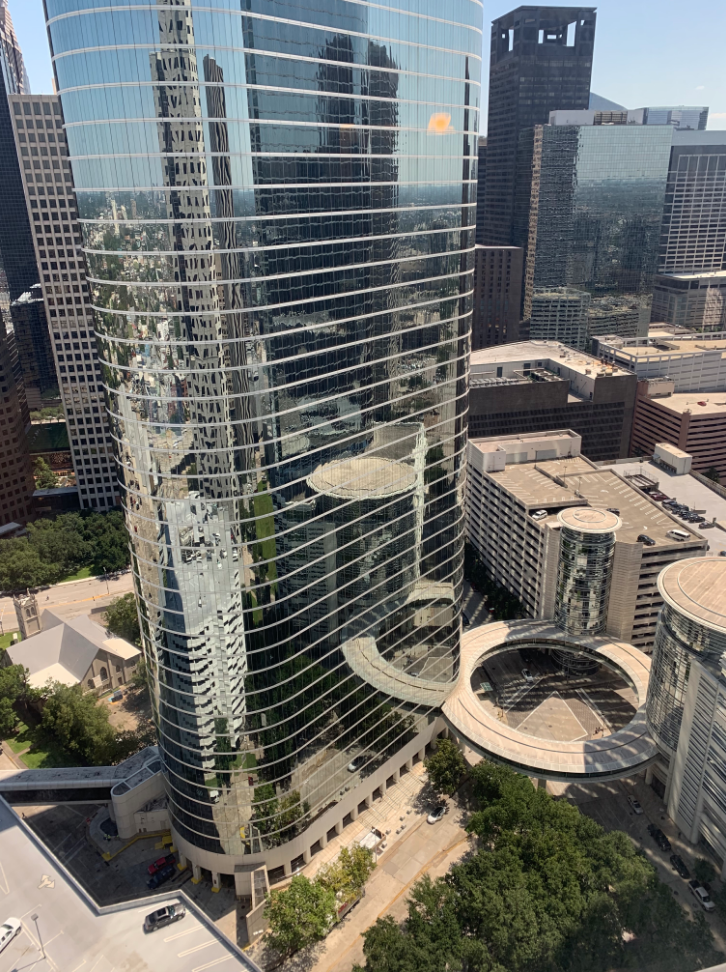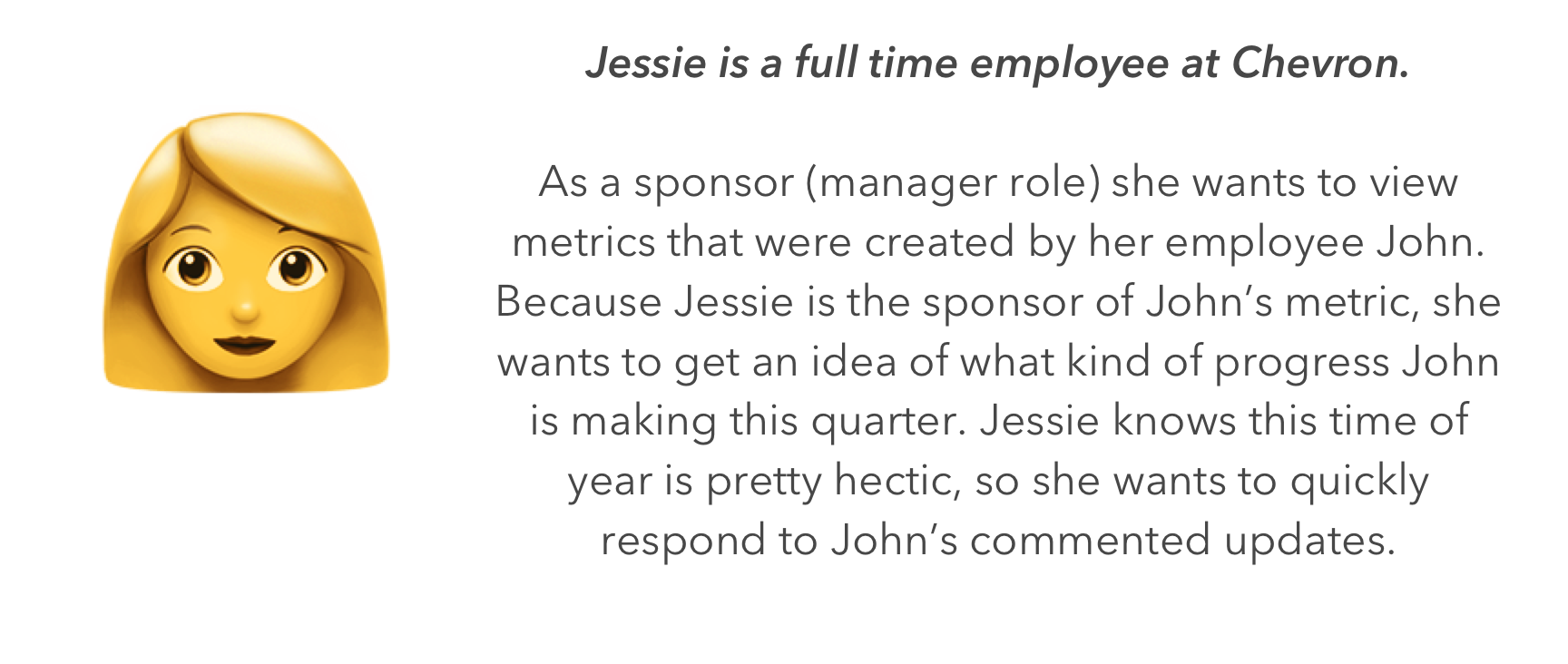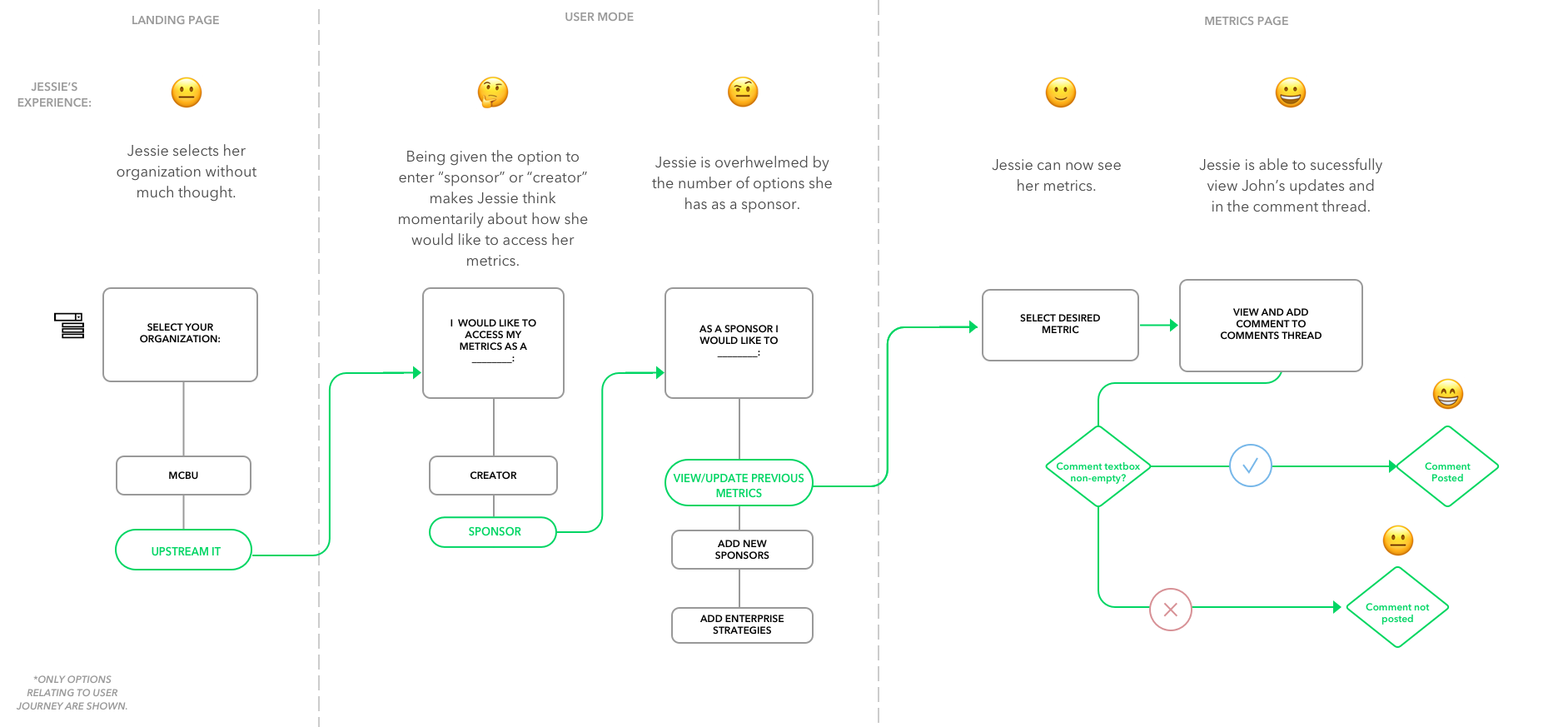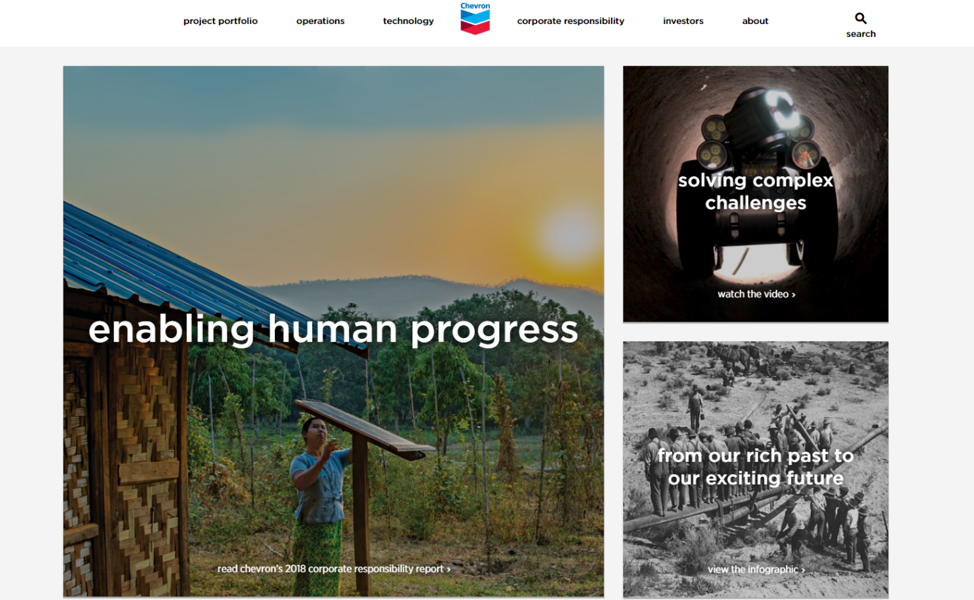In the Summer of 2019, I interned as a software developer at Chevron's corporate offices.


~ views from the cubes (Houston, TX) ~
To make sharing apps within business units easier, I was tasked with developing the Functional Excellence Framework (FEF) Application on a Microsoft platform called PowerApps.
FEF Application
Chevron employees have yearly metrics and targets. Each quarter they review metrics and set new goals based on the accomplishments they made in the previous quarter. A manager (Sponsor) will use this application to view updates and make comments on specific metrics. An employee who reports to the manager (Creator) can create metrics.
The IT department was undergoing some pretty big changes when I entered as an intern. The "great shift" to the cloud was occurring, and the drastic change seemed to be a distressing process for longtime employees. Simultaneously, the current desktop application being used by Upstream IT was slow and unpleasant for employees to navigate.
Here are just a couple of issues employees were running into:
My project for the summer was to make an internal application to help improve record tracking processes within Chevron. Keeping in mind the great shift that was going on within the company, it was important for me to not only make this application user friendly, but to make the transition for employees as smooth as possible.

I wanted to create a process that was clear yet semi methodical, to help Chevron employees to have a comfortable and familiar experience.
An example of Jessie's journey is mapped below.

Because I was developing an application that was drastically different than the previous, I wanted to ease its users into the new product. This meant using step by step screens and using a color scheme that felt comfortable and familiar. I consistently looked for feedback from my team and current employees to create a layout that fit their needs.

I followed Chevron's font and color scheme by referencing their website(chevron.com)

Knowing I was creating an application that was going to be used by a number of employees and managers in the IT department made me uneasy at first. As the sole designer and developer, I felt like I needed to have all the answers. I quickly learned that although I had more independence, I needed to keep in mind the goal of my project. Staying curious and asking questions helped turn my teams tracking process into a more productive and streamlined experience. I ended my 3 month internship with a final presentation of my work, which was presented/live-streamed to about 15 IT employees and managers.
Towards the end of my internship, Chevron put on an Internal Hackathon.
Use Case: Build an applications for Chevron employees to sign up for volunteer events at Chevron, as well as the option for administrators to manage and request volunteers.
Probably the coolest part of my internship was collaborating with 4 other interns on our hackathon project. Although we were all working in IT, we were interning in different departments and had different academic backgrounds. This was also unlike any hackathon I had ever done because it was it 3 weeks (?!). At first, I was taken aback; but I grew to appreciate the time length, because it allowed us to focus on the details and maximize the impact we wanted our application to have on the judges and our audience.
When designing the layout, my team debated hard on Chevron’s lowercase theme (but It grew on me).
the 'my events' page for our application!
Chevron gave me the opportunity to take on an important project on my own and to collaborate with interns and full time employees from all over the world. 30 IT employees depended on the FEF application to track their yearly metrics, and by making this application more user friendly and functional; the FEF application positively impacted almost 200 IT employees.